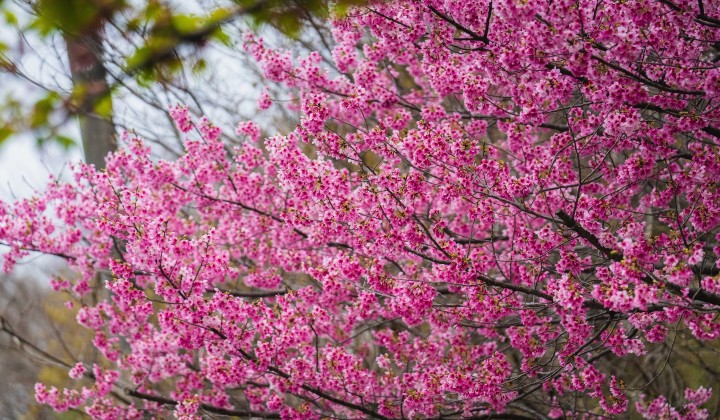Kota Kinabalu’s Tabebuia Trees: Malaysia’s Answer To Japan’s Sakura Season
The Tabebuia trees offer Malaysians a chance to experience the beauty of Sakura season without leaving the country while providing a compelling reason for foreign tourists to visit Malaysia.

Subscribe to our FREE Newsletter, or Telegram and WhatsApp channels for the latest stories and updates.
In a stunning display of natural beauty, Kota Kinabalu’s Tabebuia trees have again burst into full bloom, transforming the city into a mesmerizing sea of pink and white.
Often referred to as “Malaysia’s Sakura,” these magnificent trees offer Malaysians a chance to experience the magic of cherry blossom season without travelling to Japan.

Tabebuia trees, native to South and Central America, have found a perfect home in the tropical climate here.
They have thrived and become a beloved part of the local landscape.
Each year, as the dry season gives way to the first rains, the trees shed their leaves and explode into a riot of colour, with delicate, trumpet-shaped flowers covering every branch and twig.
Promoting this natural wonder is a welcome development for netizen Tan Chong Hong, whose stunning images of the Tabebuia trees have gone viral on social media.
The Tabebuia trees in Kota Kinabalu are a sight that everyone should experience at least once in their lifetime.
They are a reminder of the incredible beauty that can be found within the country’s borders.
A Blooming Opportunity for Tourism
The Malaysian tourism industry should recognize the potential of this incredible natural resource.
Hopefully, more people will have the chance to witness the magic of Malaysia’s sakura season for themselves.
In addition to the Tabebuia trees, another flower popular in Malaysia that resembles sakura is the Tecoma tree, also known as Tabebuia pentaphylla or pink Tacoma.
Like the Tabebuia, the Tacoma tree produces stunning pink or white flowers that bloom in clusters, creating a breathtaking display reminiscent of cherry blossoms.
These trees can be found in various parts of Malaysia, adding to the country’s impressive floral landscape.
23.03.2024 : Pink sakura in Klang. The cluster of Tacoma trees (aka Sakura tree) that were planted throughout Klang is in full bloom again. And the look magical pic.twitter.com/QQ9jaualxW
— that Klang dude (@that_klangdude) March 23, 2024
By promoting this natural wonder and encouraging Malaysians and foreign visitors alike to experience its magic, Malaysia also has the opportunity to showcase its unique cultural and natural heritage and to build a brighter, more sustainable future for its tourism industry.
Perhaps, one day, we might even witness our very own “Hanami” (Japanese custom of enjoying the beauty of cherry blossoms) in Malaysia, adding a unique twist to the global appreciation of nature’s beauty.
Neighbouring countries have already recognized the potential of Tabebuia flowers to attract tourists and boost their economies.
Surabaya in Indonesia has planted thousands of Tabebuia trees along its streets.
The trees have become a popular tourist attraction, and the city is known as the “City of Flowers” because of them.
Share your thoughts with us via TRP’s Facebook, Twitter, Instagram, or Threads.





